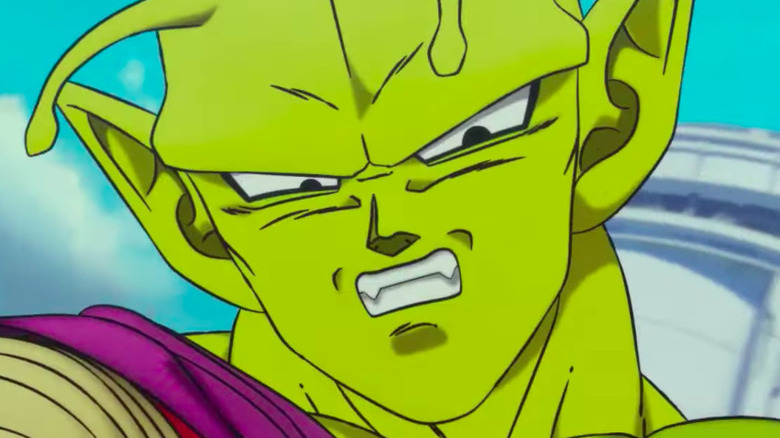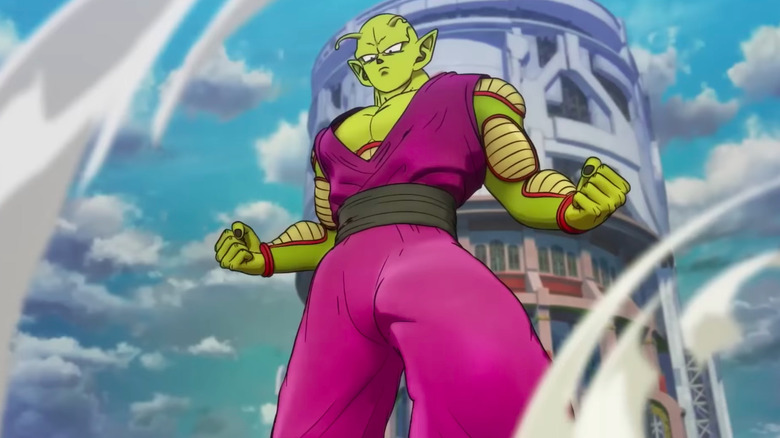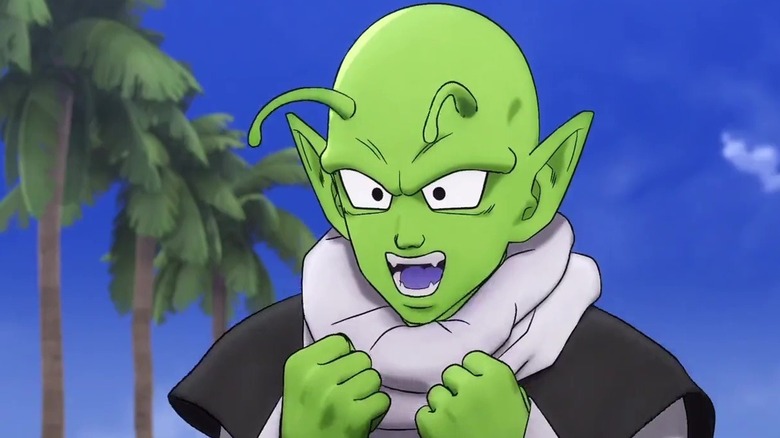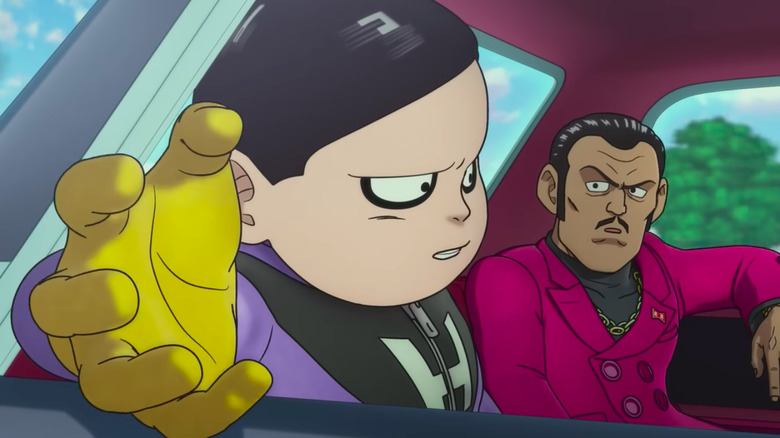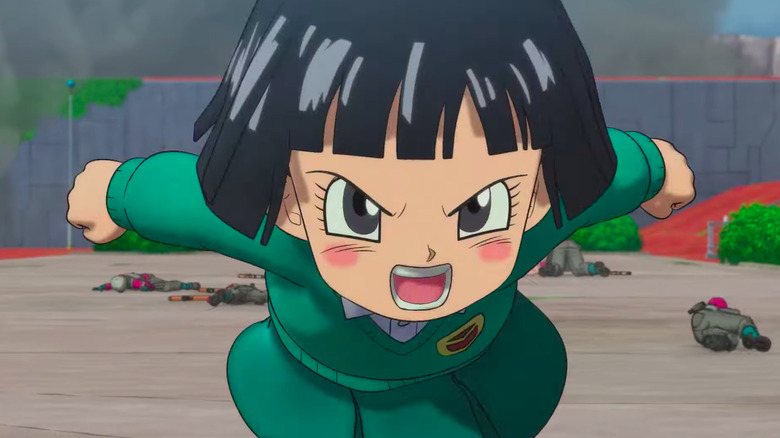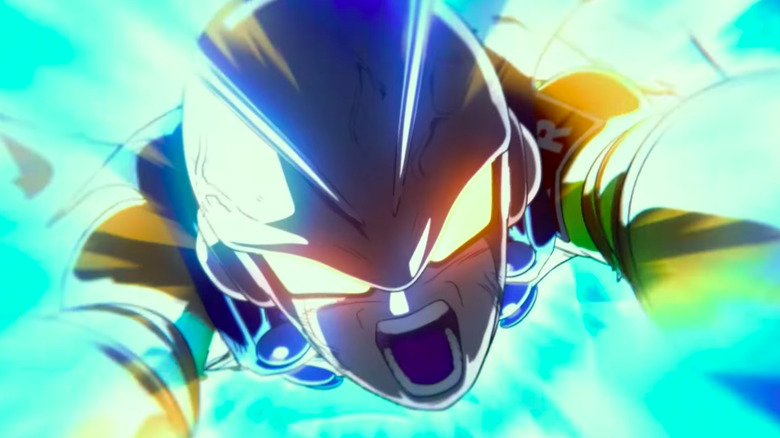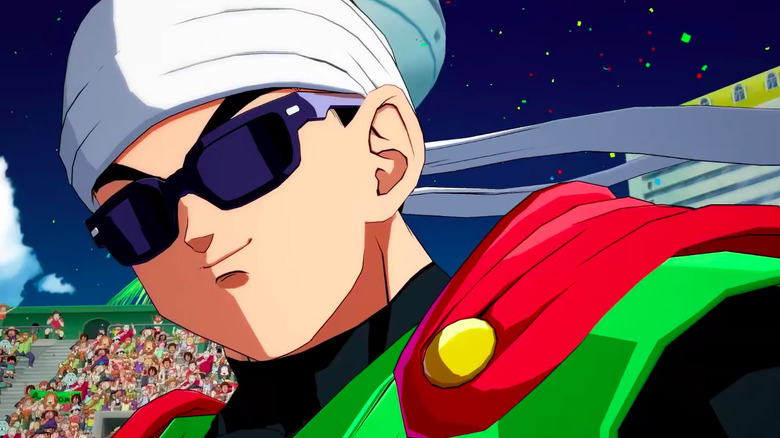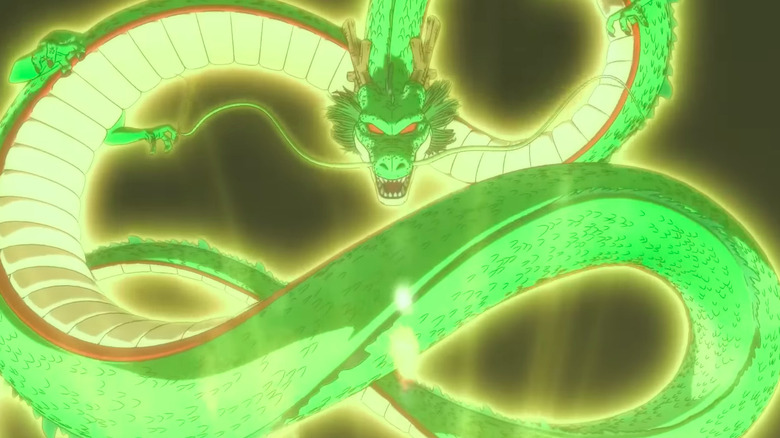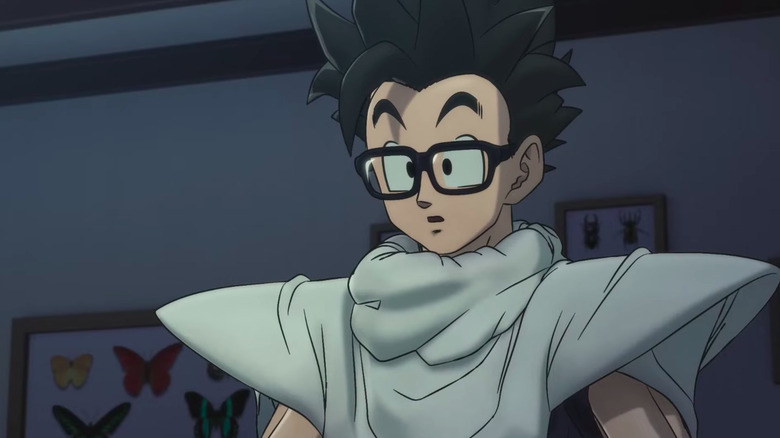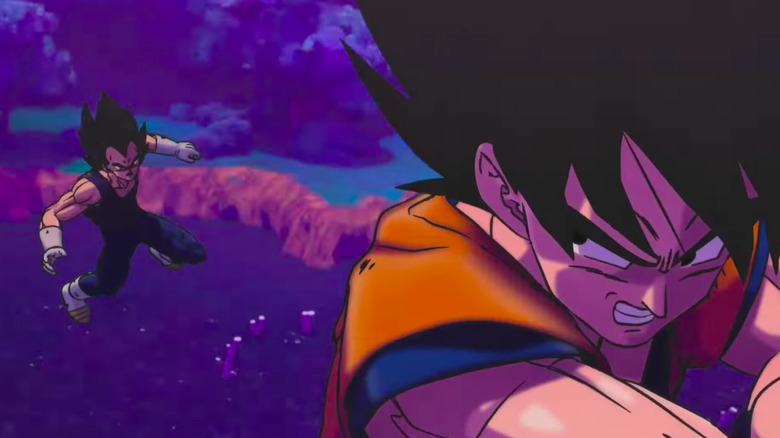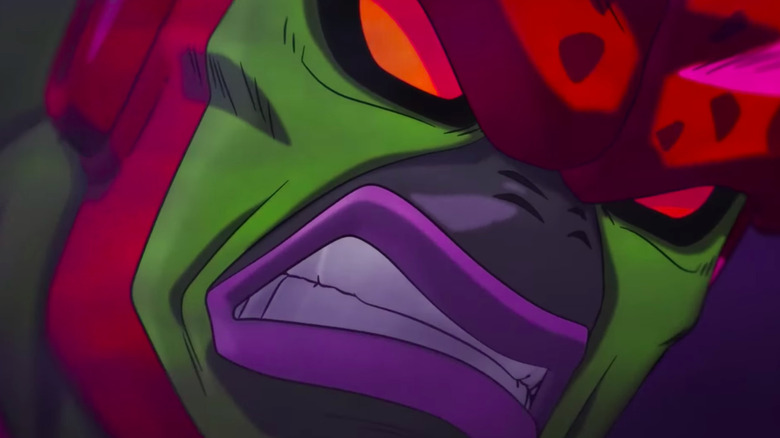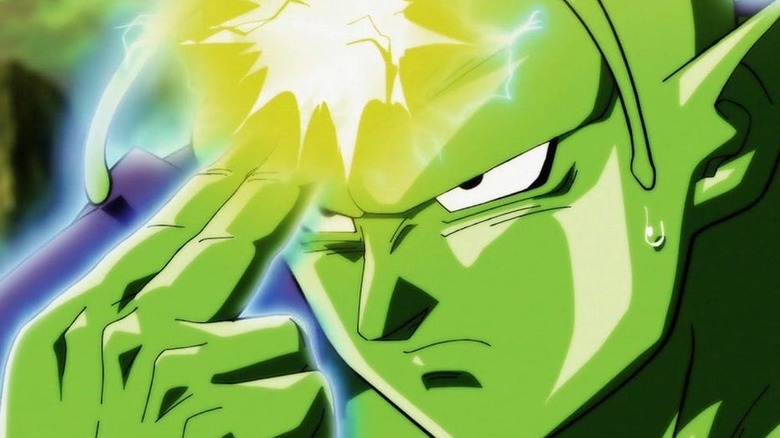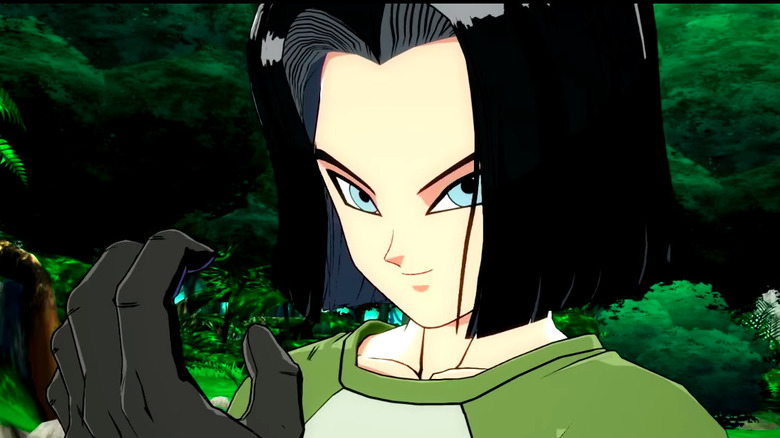The 6 Best And 6 Worst Things In Dragon Ball Super: Super Hero
You may have heard that 2022 saw the release of a new "Dragon Ball" movie. "Dragon Ball Super: Super Hero" has taken the world by storm, proving to be another triumphant success penned by the creator of the "Dragon Ball" saga himself, Akira Toriyama. Not only has the movie made some historic box office numbers for U.S. anime releases (per The Nerd Stash), it's also scored a healthy 93% approval rating among pro critics and a 95% rating among audiences on Rotten Tomatoes. Or, to some it up in just a few words: people dig it.
As with all movies, of course, "Super Hero" has its strengths and its faults, both of which are worth exploring. So what does the movie get right, and which elements — like an unfinished Android — need a little more fine-tuning? Tear down those Red Ribbon Army flags and unleash that untapped potential, because it's time to review the best and the worst of "Dragon Ball Super: Super Hero."
Best: Piccolo finally gets a movie of his own
Seeing as Goku's the main protagonist of the "Dragon Ball" franchise, it's not surprising that the majority of the anime series and movies feature him or a member of his bloodline (e.g. Bardock, Gohan, or Goten) in the leading role. That's continued into the "Dragon Ball Super" era, which has also solidified Vegeta as Goku's co-star.
But "Dragon Ball" has a lot of other fascinating martial arts characters who've played big and small roles over the years, and there are certainly contingents of the fandom who miss the days when characters like Piccolo, Tien, and Yamcha played bigger roles in the saga than they have in more recent times. "Super Hero," therefore, remedies this somewhat by finally making Piccolo, who's always been a fan favorite, the protagonist and audience's point-of-view character.
As a result, viewers now know a lot more things about him, like where he lives, what his modern-day preoccupations are (primarily making sure Gohan and Pan don't squander their potential), and what his personal interactions with friends like Bulma and Videl are like. It's a refreshing change of pace, giving viewers the chance to see the world of "Dragon Ball" through fresh yet familiar eyes. The POV change also allows the movie to focus on Piccolo's bond with Gohan, which is ultimately the emotional heart of the movie.
Worst: Namekians' unusual memory
Akira Toriyama is an undeniable fountain of creativity. However, as he's admitted in V-Jump (via Kanzenshuu) and many other places over the years, his memory's not always the best. As a result, there are sometimes continuity details that, despite Toriyama's efforts, he sometimes fudges a bit. Funnily enough in "Super Hero," a few apparent goofs also relate to memory, specifically odd comments Piccolo and Dende make about past events. When Piccolo sees the Red Ribbon Army insignia, he notes that he remembers the symbol during his days as Kami. While this is technically accurate, it's still odd he'd use Kami, who was a separate being from Piccolo at the time, as a frame of reference. After all, it's Piccolo who meets the Androids in person, while Kami merely observes their actions from way up on his Lookout.
The other Namekian who seems to have a faulty memory moment in the film is Earth's current Guardian, Dende. When Piccolo recalls that the great Namekian elder Guru could unlock a person's hidden power, Dende cheerfully confirms it, noting, in both the Japanese and U.S. audio, "I was there!" Which is a weird thing to tell Piccolo, who technically was also there — or rather, Nail, the Namek who Piccolo later absorbs, was. It's a bit unusual that Dende would forget that Nail's memories are now Piccolo's, since he's been well aware of that fact for many years.
Best: The new characters
Sure, the Red Ribbon Army is an old enemy in the "Dragon Ball" universe, having vexed Earth's heroes on two major occasions. Yet as is usually the case whenever the Red Ribbon Army's revived, "Super Hero" makes sure to introduce many new faces to the surprisingly resilient organization, albeit with a few connections to familiar characters. Leading the Red Ribbon Army this time around, for instance, is the smooth-talking but ultimately amoral Magenta, who shares many of the same ambitions as his father, Commander Red. Equally important to the movie is Dr. Gero's arrogant but well-meaning grandson, Dr. Hedo, whose aspirations to create benevolent superheroes are led astray by promises of research funding and cookies. Then there are Hedo's androids, the strait-laced Gamma 1 and the wisecracking Gamma 2: two robots who aspire to be superheroes themselves, but find themselves mixed up by Magenta's lies.
Much like he did with Broly, Cheelai, and Lemo in "Dragon Ball Super: Broly," Toriyama quickly establishes the new characters of "Super Hero" as distinct personalities, and seeing them bounce off one another is as fun as watching them interact with long-timers like Piccolo and Gohan. Perhaps the most layered is Hedo, whose feelings of guilt and sorrow from having given into his more petty desires shows he's too complicated to be dropped into clear-cut boxes like "hero" or "villain."
Worst: Pan's continuity conundrum
While Pan has sometimes been a polarizing figure in works like "Dragon Ball GT," she's won many a fan over in "Super Hero" thanks to her endearing personality, her toughness, and of course, her heartwarming and funny interactions with Piccolo. Furthermore, her arc in the movie as she struggles to achieve flight is short, but ultimately well-handed.
Yet things get complicated when you take the "Dragon Ball Super" anime into account, where Pan has no problems flying as a baby. To be fair, baby Pan is never shown flying in the manga, which Toriyama — as he's explained to V-Jump (via Kanzenshuu) — is more heavily involved in overseeing. Is it possible Toriyama simply wasn't aware that Pan flew in the anime, or simply forgot? Either possibility would be surprising, as one might expect others involved in making the movie to point out the apparent discrepancy.
One possible in-story explanation could be that Pan had less difficulty accessing her power as a baby because she was less weighed down by thoughts that can hold back more developed, conscious minds, like doubt. There is some precedent for this: before Piccolo's training in "Dragon Ball Z," Pan's father, Gohan, could only access his massive power when his rage essentially turned his non-combative conscious mind off, leaving him with no memory of his jaw-dropping feats once he snapped out of it.
Best: The emotional reason for its title
"Dragon Ball Super: Super Hero" raised a few eyebrows when its title was announced, with Akira Toriyama himself admitting it seemed "a bit repetitive" (per Coming Soon). The explanation, as it turns out, is hilarious and true to Toriyama: he had forgotten the word "Super" was already in the title (via California18).
Watching the movie, though, you'll realize the name is a perfect fit in a number of ways. Of course, there's Dr. Hedo's obsession with building superheroes, not to mention the fact that he dresses like one himself. Furthermore, Gamma 1 and Gamma 2 dress, talk, and act like misguided superheroes — their actions even have visible sound effects, a la the 1966 "Batman" TV series. However, the biggest reason "Super Hero" is such an apt title is Gamma 2's heroic sacrifice to weaken Cell Max, which proves that behind 2's bravado and error in siding with villainy early on, he's every bit the super hero he wanted to be, as Piccolo himself poignantly observes. It also shows that, despite his past habit of poking fun of superheroes in his works, Toriyama also understands what they're truly meant to represent.
Worst: No Great Saiyaman
It's a stunning omission, to be sure. Could Toriyama have truly forgotten the most prominent superhero in all of "Dragon Ball" when crafting the story for a movie with "Super Hero" in the title? Alas, that may have very well been the case. For those who could use a refresher, the Great Saiyaman is the superhero identity Gohan adopts in the final major "Dragon Ball Z" storyline as a way of hiding his identity while fighting crime. Gohan is utterly thrilled with being a superhero and delighted by the costume Bulma makes for him, but his friends aren't quite as impressed by his colorful, caped garb and bombastic Saiyaman persona.
While his face is exposed to a handful of people at a World Martial Arts Tournament, Gohan's identity continues to be secret to most of the world, and he's proudly continued being the Great Saiyaman in "Dragon Ball Z: Battle of Gods" and "Dragon Ball Super." His inclusion in "Super Hero" practically feels inevitable ... yet amazingly, it does not occur. It certainly would have been fun seeing Saiyaman swapping superhero catchphrases and poses with the Gammas, that's for sure. Seeing as Bulma has accepted Gamma 1 as one of her new employees, however, perhaps an upcoming "Dragon Ball Super" story just may treat fans to a Saiyaman-Gamma meeting after all.
Best: Dende's hidden gift and Shenron's upgrade
Piccolo's visit to Dende in "Super Hero" is a pretty impactful moment, apparent forgetfulness aside. For one, Dende gives Shenron a pretty slick upgrade, namely the ability to unlock a person's hidden potential, as Namek's great elder, Guru, once could. Furthermore, it's revealed that Dende himself will one day have the same power when he's older, as he and Guru are the same Namekian type.
The implications of both turns of events may be bigger than you think. Aside from giving Piccolo one mammoth of a power upgrade, a Shenron and Dende with power unlocking abilities could help other fighters weaker than Goku and Vegeta finally catch up without, say, having to sit through the Elder Kai's long ritual. What deeper potential lies behind Tien's Tri-Beams or Yamcha's Wolf Fang Fist, for instance? Could Chiaotzu have enough psychic might to make even a Kai's jaw drop? Or what might happen if an Android like 17 or 18 decide they want to see how deep their strength really goes? Heck, even Krillin and Gohan can see if they've accumulated any more hidden power since their visit to Guru on Namek.
Naturally, villains could make use Shenron and Dende's powers, too, as could Goku, Vegeta, or any visiting Namek eager to learn if, like Piccolo, they too have an Orange transformation within them. Suffice to say, the number of characters who could benefit from such a convenient power boost is almost limitless.
Worst: Gohan's Senzu Bean mishap
Gohan will always be one of the strongest fighters in the world of "Dragon Ball," but he's pretty out of practice as the events of "Dragon Ball Super: Super Hero" begin. As a result, his fighting instincts aren't always what they once were. While Piccolo and Pan subtly help Gohan get his groove back, even they can't prevent his biggest blunder: accidentally dropping a Senzu Bean that Piccolo throws his way down a crevice. As Cell Max is wreaking havoc while this occurs, Gohan simply continues fighting without it, knowing he and his friends only have one Senzu left to heal themselves with.
Let's face it: that Senzu Bean slip is a pretty big goof for Gohan to make. The mistake has a narrative purpose, of course, both providing a moment of levity and upping the stakes for Piccolo, Gohan, and their fellow warriors. Still, one wonders if Gohan's error might have been preventable. While it's not entirely Gohan's fault, as he has difficulty seeing the bean without his glasses, perhaps an easy fix would have been to quickly turn Super Saiyan while trying to catch it, as transforming seems to improve Gohan's eyesight. Another option would have been to simply combine his super-strength and flight to burrow through the crevice and grab the Senzu. Admittedly, though, that alternative may have caused complications, as the bean might have gotten buried under the resulting debris and thus become even more difficult to find.
Best: The clever way Toriyama keeps the other fighters out of it
Let's face it: it can be hard for other "Dragon Ball" fighters to have their moment in the sun when Goku and Vegeta are around. Being two of the most powerful characters in "Dragon Ball Super," they're usually the ones who take care of the biggest threats. Between them and even more powerful allies like Broly, Beerus, and Whis, it's not often these days one sees characters who aren't Saiyans or deities saving the day in Dragon World.
Luckily, Toriyama is pretty adept at finding ways to remove the more powerful pieces from the "Dragon Ball" board when needed. Usually, it's just Beerus and Whis who the author has to creatively work in and out of the narrative. This time, though, he has five characters to keep out of the fray, and he succeeds ingeniously through his trademark humor. Namely, an empty ice cream tub thrown by Beerus lands right on top of Whis' staff just as Bulma is trying to call for help, leaving the gods and their pupils completely oblivious to their friends' battle with the Red Ribbon Army. Thus in their absence, Gohan, Piccolo, and several others get to rise to the occasion and remind fans they've still got what it takes.
Worst: Cell Max doesn't talk
Don't get us wrong: Cell Max is a beast of a villain. A hulking monstrosity the size of a skyscraper, Cell Max is more than a worthy foe, with unbridled power and booming screams that'd freeze just about anyone in their tracks. Yet for all his capabilities, one escapes him: unlike the original Cell, this version does not speak.
There is a solid story reason for his silence, as Magenta unleashes Cell Max before Dr. Hedo has time to finish programming the giant Cell facsimile. Still, it would have been great to hear the menacing eloquence that Dameon Clarke and Norio Wakamoto brought to Perfect Cell when they voiced him in English and Japanese, respectively. While fan opinion is somewhat mixed over whether it was the right move, a gigantic, roaring behemoth can (not always, but often) be more intimidating than a talking one. Would titanic "Dragon Ball" terrors like Hirudegarn been as scary if they'd been waxing poetic, for instance?
Best: Gohan's homage to his mentor
Ever since Piccolo first trained Gohan in martial arts, the two have had a strong bond. It's their friendship, in fact, that inspires Piccolo to fully abandon his evil ways when Nappa and Vegeta arrive to threaten Earth in "Dragon Ball Z." Since then, Piccolo has often served as a second paternal figure to Gohan, often fighting alongside the half-Saiyan and helping him get back into shape.
Given how Piccolo's training has played a big role in Gohan's victories as a fighter, it's understandable that he'd feel grateful for his Namekian mentor's teachings. And how better to thanks his longtime martial arts instructor by using Piccolo's famed energy attack, the Special Beam Cannon, to defeat Cell Max? It's the perfect icing on the cake for fans of Piccolo and Gohan, made all the more touching when Gohan reveals he'd been low-key practicing the move during the time Piccolo thought the demi-Saiyan had been neglecting his martial arts.
Worst: No Android 17
The great thing about Goku and Vegeta's reduced role in "Super Hero" is that it really does give other heroes a spot in the limelight. Piccolo and Gohan are the major two, of course, but Pan, Krillin, Android 18, and Gotenks also get to join the fight and play their part in taking Cell Max down, along with the Gammas. 18's inclusion is a particularly smart move, as she gets to express her astonishment at seeing a souped-up version of Cell — a character she has quite a bit of history with.
Yet, like 18, there's another "Dragon Ball" character who also has ties to Cell and the Red Ribbon Army: her twin, Android 17. Oddly, though,17 doesn't appear at all in the movie, not even receiving a mention. While it's probably for the best Android 17 wasn't involved in the fight directly, as his enormous power might've made him upstage Piccolo and Gohan, a cameo would have at least been nice, if only to see his reaction when he hears about Cell Max.
